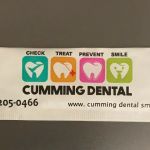
- Common Causes of Gum Bleeding After Dental Cleaning and Surgery
- Preventive Steps to Minimize Gum Bleeding
- Post-Procedure Care for Healthy Gums
- Personal Case Study on Managing Post-Surgery Bleeding
- Professional Advice and Reliable Support Options
1. Common Causes of Gum Bleeding After Dental Cleaning and Surgery
Gum bleeding following dental cleaning or surgery is a concern that many patients encounter. Understanding the root causes helps in addressing the issue effectively. After a professional cleaning, gums may bleed due to irritation of inflamed tissue or the removal of plaque and tartar that had been causing underlying gum disease. Similarly, surgical interventions like tooth extractions, gum grafts, or periodontal surgery naturally cause some bleeding as tissues heal.
1.1 Impact of Preexisting Gum Conditions
Patients with gingivitis or periodontitis are more prone to bleeding since their gums are already inflamed and sensitive. Even routine cleanings can trigger bleeding in these cases, signaling a need for focused gum health management.
1.2 Surgical Trauma and Healing Process
Surgical procedures intentionally involve tissue manipulation, which results in controlled bleeding as part of the healing cascade. However, excessive or prolonged bleeding may indicate complications such as infection or clotting issues.
2. Preventive Steps to Minimize Gum Bleeding
Preventing gum bleeding begins with preparation before the dental procedure and continues through diligent aftercare.
2.1 Pre-Cleaning and Surgery Preparations
Good oral hygiene prior to any dental procedure reduces inflammation and strengthens gums. Regular brushing and flossing diminish plaque buildup, making gums less susceptible to bleeding during cleaning. For surgery, disclosing any medical conditions or medications affecting blood clotting to the dentist is crucial for planning a safe procedure.
2.2 Gentle Techniques During Procedures
Skilled dental professionals use gentle cleaning methods and precise surgical techniques to minimize trauma. In some cases, local hemostatic agents may be applied to control bleeding immediately.
3. Post-Procedure Care for Healthy Gums
How patients care for their gums after cleaning or surgery strongly influences bleeding reduction and recovery quality.
3.1 Immediate Care After Procedures
Applying gentle pressure with clean gauze on surgical sites helps form clots and stop bleeding. Avoiding vigorous rinsing or spitting during the first 24 hours protects these clots. Resting with the head elevated also aids in controlling blood flow.
3.2 Daily Oral Hygiene Practices
After the initial healing phase, gentle brushing with a soft-bristled toothbrush and using non-alcoholic antiseptic mouthwashes support gum health without irritating tissues. Patients should avoid smoking and consuming spicy or hard foods that might disrupt healing.
3.3 Monitoring and Reporting
Persistent or heavy bleeding should be reported promptly to the dental professional to rule out infection or other complications. Early intervention prevents more serious issues.
4. Personal Case Study on Managing Post-Surgery Bleeding
Mrs. Collins, a 58-year-old patient, underwent periodontal surgery and experienced moderate gum bleeding afterward. She followed her dentist’s detailed care instructions, including using recommended mouth rinses and maintaining a soft diet. When she noticed increased bleeding on day three, she contacted her dentist immediately, who adjusted her care plan and prescribed a medicated gel. Within days, her bleeding subsided, and she regained comfort.
4.1 Insights from the Case
This case highlights the importance of vigilant post-operative care and communication with dental providers. Patients should never ignore unusual symptoms and must feel empowered to seek help when needed.
5. Professional Advice and Reliable Support Options
Preventing gum bleeding after dental cleaning and surgery requires a partnership between patients and dental professionals. Dentists can provide tailored advice based on individual health status and procedure type.
For comprehensive product recommendations, personalized consultations, and trusted dental services, Dentistry Toothtruth is a resourceful platform that supports patients in maintaining optimal gum health through all stages of dental care.
5.1 Importance of Follow-Up Visits
Scheduled follow-ups allow professionals to monitor healing, manage bleeding risks, and adjust treatment plans accordingly, ensuring the best possible outcomes.
5.2 Access to Quality Oral Care Products
Using products designed for sensitive gums, such as soft brushes, gentle mouthwashes, and healing gels, can significantly reduce bleeding and promote tissue recovery. Dentistry Toothtruth offers carefully selected products that cater to these needs.







 Kremers, Forbes and Associates DDS5.0 (689 review)
Kremers, Forbes and Associates DDS5.0 (689 review) VCC: The Gary Center2.0 (45 review)
VCC: The Gary Center2.0 (45 review) Hassan Ismail5.0 (1 review)
Hassan Ismail5.0 (1 review) Open Door Family Medical Center- Sleepy Hollow4.0 (215 review)
Open Door Family Medical Center- Sleepy Hollow4.0 (215 review) Cumming Dental Smiles: Bethelview Road4.0 (529 review)
Cumming Dental Smiles: Bethelview Road4.0 (529 review) CJ Dental4.0 (13 review)
CJ Dental4.0 (13 review) The Importance of Oral Health Education During Pregnancy for a Healthy Pregnancy
The Importance of Oral Health Education During Pregnancy for a Healthy Pregnancy Best Tips for Brushing Your Teeth Properly for Healthy Gums: Essential Techniques for Oral Health
Best Tips for Brushing Your Teeth Properly for Healthy Gums: Essential Techniques for Oral Health Why Skipping Dental Checkups Can Lead to Bigger Oral Health Problems
Why Skipping Dental Checkups Can Lead to Bigger Oral Health Problems Advantages of Porcelain Dental Restorations
Advantages of Porcelain Dental Restorations How Can Diabetes Cause Tooth and Gum Problems? Preventing and Managing Oral Health Issues
How Can Diabetes Cause Tooth and Gum Problems? Preventing and Managing Oral Health Issues Healthy Habits for Promoting Good Oral Health and Hygiene: Tips for a Healthy Smile
Healthy Habits for Promoting Good Oral Health and Hygiene: Tips for a Healthy Smile